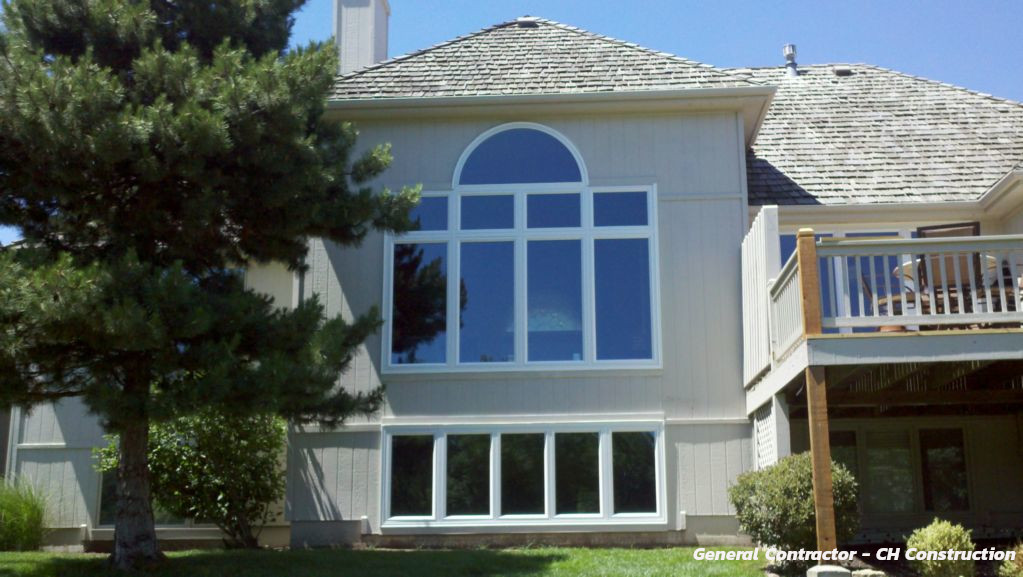When it comes to home maintenance and energy efficiency, the first thing a home owner needs to evaluate is their windows. Most homes have areas that are glossing heat/cool air. Furthermore, 40% of warm or cold air is lost through windows, doors and floors. Replacing your windows can save you up to approximately $500.00 a year. Not to mention, the green effect you can have on the environment.
“Taxpayers who upgrade their homes to make use of renewable energy may be eligible for a tax credit to offset some of the costs. As of the 2018 tax year, the federal government offers the Non business Energy Property Credit. The credits are good through 2019 and then are reduced each year through the end of 2021.” states Intuit TurboTax. Consequently this may be a perfect time financially to place windows in your home. With so many different options on purchasing windows, this blog is to simplify the options with a guide to window replacements.
Window Anatomy
Firstly, it is good to know the anatomy of a window before you start shopping. This will make communicating your needs with a sales representative more productive. A consumer report has made it easy to understand.
- “Frame provides structure.
- Cladding protects the exterior of a wood or composite window and is made of vinyl, aluminum, or fiberglass, eliminating painting.
- Sash is the moving part of the window; it can be tilted in for easy cleaning.
- Insulated glass Double-glazed windows have a sealed space between two panes of glass filled with air or another gas that insulates better than air. Argon gas is standard on many windows, but the energy savings won’t justify paying extra for it.
- Low-E coating is transparent and improves the efficiency of the glass by reflecting heat yet letting light in. The coating is applied to the outside of glass in warmer climates to reflect the sun’s heat out; in colder areas, it’s applied to the inside glass to keep heat in.
- Grilles are decorative and are available in different patterns to match architectural styles.”
Before You Shop
Shopping for the windows that are right for your home is important. Kiplinger has made the lingo a little easier to understand.
“Double-hung windows may be opened from the top and bottom. Casements open with a crank, which makes them easy to operate. They are especially handy in hard-to-reach places, such as over the kitchen sink.
Double-pane windows are two pieces of glass that may have an inert gas (such as argon or krypton) between them that insulates better than air. Mullions, or vertical and horizontal dividers, give windows a traditional look; snap-out mullions (also known as simulated divided lite, or SDL) make cleaning easier.
Tilt-out windows let you clean the exterior from the inside.”
Secondly, another website, Discount Doors+ Windows explains the window glass differences.
“Single glazed vs. Dual glazed
A single-glazed window has just one layer of glass. A dual-glazed (or dual-pane) window has two layers of glass with a hermetically sealed air space between them. With single-glazed windows, there is very little that can go wrong with the glass unless it breaks, but single glazed windows do almost nothing to insulate your home.
The advantage to dual-glazed windows is that the air trapped between the panes of glass insulates the way air trapped between feathers in a down comforter insulates. The disadvantage to dual-glazed windows is that the hermetic seal will fail eventually. Most experts say in 15 to 20 years, so it is important to choose a window manufacturer who offers a warranty on the dual-glazed units. Also, who is likely to still be in business 15 to 20 years from now. If not covered by warranty, replacing the dual-glazed units will probably cost as much as your replacement windows did in the first place.
Low-E Glass
Low-E is short for “low-emissivity.” It is a high-tech coating on the glass that is designed to block much of the heat and ultra-violet light from the sun, while permitting a large percentage of visible light, so it will reduce solar heat gain and fading without making your home uncomfortably dark. Almost all window manufacturers now consider low-e glass to be standard for new windows, but upgrading from standard Low-E to new high-performing Low-E will provide even greater energy efficiency.
Low-Maintenance Coatings
Some window manufacturers are now offering a low maintenance glass coating, sometimes referred to as “self-cleaning” glass. Calling it self-cleaning may be overstating the facts, but the low-maintenance coatings do help your windows stay cleaner and make them easier to clean. Cardinal Glass Industries makes a low-maintenance coating called “Neat.” Cardinal says that Neat-coated glass “harnesses the sun’s UV rays to loosen dirt so water can rinse it away, leaving windows virtually spotless. Your windows will stay cleaner longer and will clean easier.”
Argon Gas
Argon gas is a colorless, odorless, inert gas that is denser than air and can be used between panes to provide a small improvement in thermal performance and energy savings.”
Contractor
After choosing the windows the next step is finding a contractor to install your windows. If you chose to find a contractor prior to purchasing your windows, he may be able to help you decide on the windows that fit your families need. In previous blogs, I mention the difference in licensed and unlicensed contractors. I would highly recommend you consider a licensed contractor that is insured as well. When it comes to your home, it is worth the money to protect your investment with a contractor who is following city and county codes.
Installation
I’ve spoken personally with home owners who have chosen to replace windows and once the project started the contractor found wood rot and pest damage. Often these problems do not appear evident until the window is removed. This would be the time to address the issue. It’s important when budgeting for window replacement; you should take into consideration the possibility of wood rot damage that will need to be repaired. You may want to discuss the possible additional cost with your contractor, before you get started. We recommend when working with a contractor to document all wood rot or pest damages for possible insurance claims and for your own documentation of the damage.
In Conclusion
When is the best time to have your windows replaced? Once you speak to your contractor you will want to consider the weather and temperatures when starting this project. Most importantly, ask your contractor to give you an estimated project timeline. Once the project is complete your home will be energy efficient, beautiful and peaceful. If CH Construction can help you on your window replacement project, give Brandt a call to schedule an appointment.






